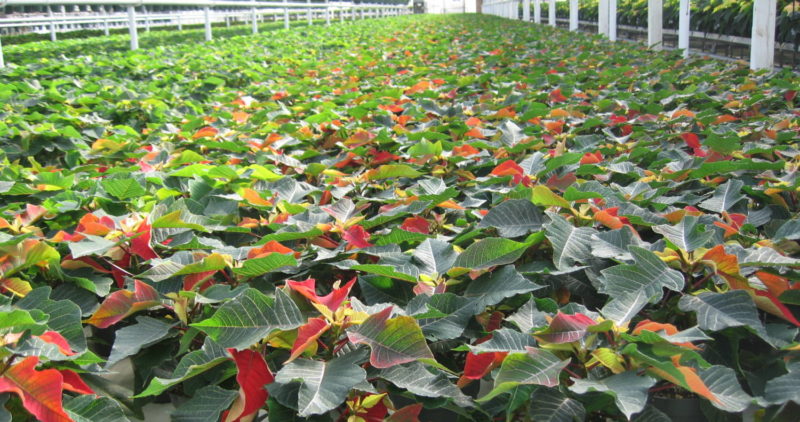
Strategies to Shorten Crop Production Time
In the production of floriculture crops, a common goal is to produce high-quality and uniform crops in a short period of time. There are a number of factors that influence crop timing of flowering plants, including the species and cultivar (genetics), maturity of the young plant at transplant, plant culture and environmental conditions. This article briefly summarizes how these factors can shorten, or in some cases unintentionally lengthen, the production time of crops grown in greenhouses.
Genetics. Numerous cultivars are available for virtually all of the major greenhouse-grown species. There is usually some variation in plant vigor and flowering time from one cultivar or series to another. When growers have flexibility in the specific cultivars they grow, determine whether options exist with shorter production times.
Maturity of starting material. The finish time of crops depends partly on the maturity of the plug or liner at transplant. The number of leaves on the main stem(s) is usually a better indicator of plant age than cell size. To shorten crop production time, start with a larger and more mature transplant. For example, plants grown in larger cells for an additional week or two often finish a week or two quicker than transplants grown in smaller cells for a shorter period of time. Taken to an extreme can be problematic though, since transplanting is more difficult with root-bound plugs and liners, and grow-out into the final container can be delayed.
Raise the temperature. The time it takes for a plant to develop a leaf or flower is strongly influenced by the average daily temperature. Oftentimes, the crops with the longest greenhouse production periods are cold-sensitive crops, which we have defined as crops that do not begin to grow until the temperature is at least 46° F. Examples of cold-sensitive crops are angelonia, blue salvia, browallia celosia, gomphrena, hibiscus, pentas, torenia, vinca and many ornamental grasses. An average temperature of less than 70° F usually delays production time, so for these and similar warm-season crops, increase the temperature (especially during the day) to accelerate crop development. However, in some cases, high temperature can delay flowering. Examples include poinsettia and chrysanthemum, in which a night temperature higher than about 73° F delays flowering.
Regulate the photoperiod. Many common annual and herbaceous perennial crops flower earlier when the days are long (the nights are short). What constitutes a long day depends on the species and sometimes cultivar; some long-day plants may flower under an 11-hour day (13-hour night), whereas others may not flower until the days are 14 or 15 hours long. However, for many long-day floriculture crops, the days are naturally long beginning in late March or early April. Before then, delivering at least a low intensity of light (at least 1 to 2 μmol×m–2×s–1), either at the end of the day or during the middle of the night for 4 hours, can accelerate flowering.
There are a handful of floriculture crops that flower earlier when the days are short (the nights are long). Common examples of short-day crops are African marigold, celosia, chrysanthemum, cosmos, poinsettia and zinnia. For these crops, shortening the day using blackout curtains in the morning and/or evening, from March through September, can accelerate flowering and shorten crop production time.
Increase light levels. Except for some shade-tolerant plants, the production time of ornamental crops decreases as the average daily light integral (DLI) inside greenhouses increases. This is particularly noticeable during the winter and early spring when the DLI is less than 8 to 10 mol×m–2×s–1. Adding supplemental lighting during these low-light periods can decrease production time by one to two weeks. In addition, plants grown under higher light are typically of higher quality (more compact, more roots, more branches, and more flowers) than plants grown without supplemental lighting.
Plant culture. While good growing practices do not shorten production time, suboptimal conditions can delay production. For example, a root zone with an excessively low or high pH or low or high fertility can cause nutrient deficiency or toxicity, which decreases growth rate and plant vigor. The presence of insect pests or pathogens also hinder growth and can delay the marketability of plants. Improper use of plant growth regulators can also delay production time, especially when too high of a concentration is applied late in the production cycle. These are just some examples that illustrate the importance of good crop management. Closely monitoring crops on a routine (e.g., weekly) basis, such as checking sticky cards for insect pests and measuring the substrate pH and EC, followed by proactive corrective actions, can identify and resolve problems before they manifest themselves and create much larger challenges and production delays.









 Video Library
Video Library 


















